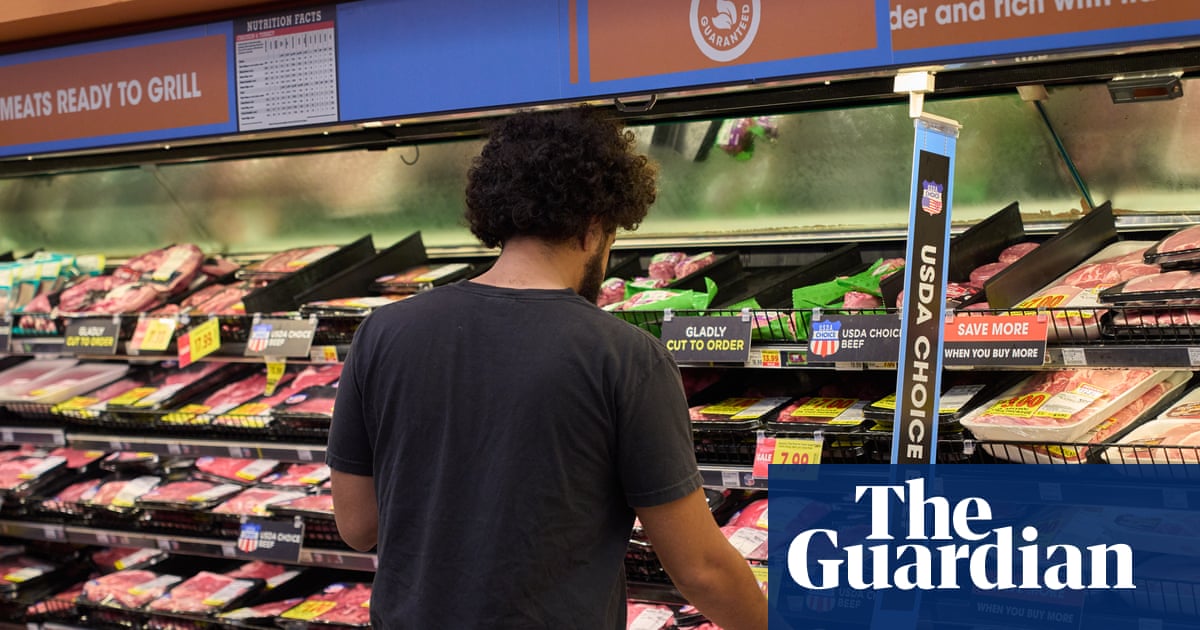If beef is what’s for dinner, expect to pay more for it.
The classic combination of tight supply and strong demand has pushed US cattle and beef prices to record highs, and there is little end in sight with farmers reluctant to expand their herds and selling off high-priced heifers to dig them out of debt.
Ground beef prices hit a record high of $6.32 a pound in August, and beef prices were up 13.9% year-over-year according to the consumer price index, far outstripping overall inflation rise of 2.9%.
Meanwhile, a culmination of years of low prices, rising costs to raise cattle, and years-long droughts that dried up grazing pasture caused cattle ranchers to slash their beef herds to the lowest level since 1951. As a result, CME Group live cattle futures prices recently rose to a high of $243.58 per hundredweight. (Hundredweight is equivalent to $10 per 100lbs)
There are several reasons for ranchers’ hesitancy, says David Anderson, livestock specialist at Texas A&M University. The last time cattle prices set a record in 2014, ranchers quickly bred more bovines, only to see prices collapse. Now he estimates cattle ranchers are making well-over $500 per head selling cattle and so far show little incentive to expand their herds.
After several years of losing money, ranchers are grateful for the higher returns but many are gun shy to rebuild.
Brett Kenzy, a fourth-generation cattle rancher in South Dakota, who raises 2,700 head of cattle, isn’t planning to expand. “We have much better prices, but I see a real lack of confidence in the market,” he says.
Narciso Perez, founder of Zia Commodities, in Albuquerque, New Mexico, raises cattle and is a cattle broker, echoes Kenzy’s sentiments. Instead of spurring ranchers to breed heifers, high prices are incentivizing producers to sell them to pay debts.
“It’s a matter of, I don’t know how long this is going to last, but I know that today I can pay all my bills off, and I know for two decades I’ve not been able to do that,” he says.
Even if ranchers decided to start expanding the herd today, it could take up to four years to produce slaughter-ready cattle. “Biology is tough to beat,” Anderson says.
Beef production has dipped further recently because the US closed the Mexican border to cattle imports to prevent the spread of New World screwworm, a species of flesh-eating fly larvae. With domestic supplies tight, it has a ripple effect on the national beef price, he says.
The cattle shortage is eating into the profits of major meat processors including Tyson, JBS and Cargill which all have reported lower earnings this year.
Consumer preferences play their part in higher prices. Beef demand has grown over the years, but Americans eat fewer roasts and more ground beef and steaks, says Bryan Flannery, owner of Flannery Beef, a San Francisco-area boutique meat processor and distributor to wholesale and retail buyers, who has seen his costs rise.
Additionally, meat-eaters have gravitated to higher quality grades with more intra-muscular fat, such as upper choice and prime, which costs more than the leaner select grade. Because of this, grocery stores carry less of the cheaper select-grade beef, and ground beef contains more muscle meat than beef trimmings.
Last year the US imported 16% of its beef needs, and tariffs will make your next burger more costly. Fifty percent of US beef consumption is ground beef, and Brazil is the biggest supplier of beef trimmings. The additional 50% tariff on Brazil imports means the total tax on those beef imports is 76.4%.
Restaurant owners say they’ve seen their beef costs rise significantly and have no choice but to pass the costs on to consumers to stay in business. Leonard Botello, pitmaster and owner of craft barebcue restaurant Truth BBQ in Houston and Brenham in Texas, says when he opened 10 years ago, he paid $2.50 a pound for prime brisket and now pays about $8 a pound. He’s nearly doubled the price he charges diners for brisket to $37 a pound from $18 when he started.
Jason Vincent, owner of three popular Chicago restaurants, Giant, Chef’s Special and Pizza Matta, says his beef costs rose by $3 a pound in the past two months.
“You want to offer value, but, honestly, that’s out the window. I mean, we’ve absorbed everything we can,” Vincent says.
Despite having to raise prices, both Botello and Vincent say diners are undeterred as beef dishes are their biggest sellers. “Brisket is our highest seller, but lowest margin. The only way to make up for it is to sell a ton of brisket,” Botello says.
Flannery, who sells dry-aged premium beef to high-end restaurants, says to make their margins, chefs generally need to mark up protein by three to four times what they purchase from him. “If I sell a steak that costs $25, they’re going to put that on the menu for $75 to $100,” he says.
With alcohol consumption down in restaurants, there’s less wiggle room on costs. “In the old days, they could say, Okay, I’ll back off on my margins on the protein, because I’m going to sell $100 bottle of wine,” he says.
So far there’s little sign of Americans eating less beef despite the high prices, but that’s the biggest worry, since beef prices have increased much more than pork or chicken. That’s what worries producers like Kenzy and Perez.
“Demand destruction is the biggest risk,” Anderson says. “There’s not much evidence yet. But (consumers’) income is a concern, because if we were to go into a big recession, that matters a lot.”

